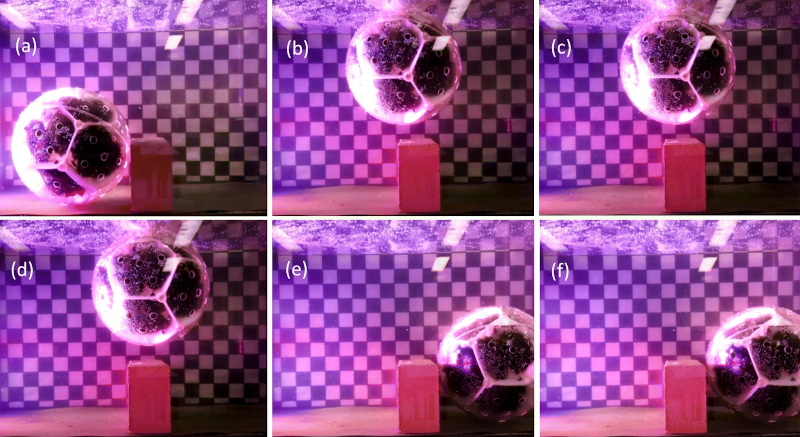When you think of a robot, you probably don’t think of a ball of underwater algae. But a team of university researchers used a 3D-printed exoskeleton and a ball of marimo algae to produce a moving underwater sensor platform. It is really at a proof-of-concept stage, but it seems as though it would be possible to make practical use of the technology.
Marimo are relatively rare balls of algae that occur in some parts of the world. A robot powered by algae runs on sunlight and could be electromagnetically quiet.
The researchers encased the algae in a PLA exoskeleton. As the balls conduct photosynthesis, they generate gas bubbles. By controlling where the light strikes the algae, gas bubbles form in one area and this drives the surrounding ball in the opposite direction. If the ball had a way to control the direction of light, it would be possible to steer the robot.
The researchers also put barriers in the way of the robots. When they get stuck the gas bubbles are unable to vent from the exoskeleton. This forces water out making the whole assembly more buoyant. This causes the rover to rise and as the gas is free to release, the robot will sink again.
In its current form, the rover is inexpensive to create and has applications as a sensor platform where speed isn’t an issue but longevity is.
We love underwater robots. It seems like the coolest ones look like nature.

















Marimo are quite popular pets for children in Japan. You can buy one for 100 yen (less than a dollar). They don’t really do anything other than sit in a small bowl of water, so I never really saw the draw.
I also realized they are not really sustainable. They grow extremely slowly. I have few tiny ones for some time and they barely changed the size even when i’ve been pumping co2 into the tank. experimented with various nutritients and reccomended salinity levels. They don’t grow these in industrial aquariums, it would perhaps take decades. They gather them from some lake in japan. But IMO there is no way they grow at the rate they are selling them at. Eventualy there will be no left in the nature. Kinda reminds me of documentary “The Cove” from 2009.
They’re present (but declining) all over the world.
They’ve been protected in Japan since 1920.
Most of those in pet stores come from Ukraine.
https://academic.oup.com/bioscience/article/60/3/187/256937?login=true
As the natural supply dwindles, artificial cultivation will begin.
Nice idea!
The first thing that came to mind when I saw the image of this article, was the Amiga “boing” or “bouncing ball” demo…
A Marimo with an exoskeleton?
Surely must be called “Super Marimo”???
So, has anybody read “Project Hail Mary by Andy Weir”?
– For me, that association is way stronger than with Nintendo
Interesting. How controllable or programmable does it have to be to be considered a robot. Or for that matter, what exactly makes something a robot?
At this point if it moves then it’s considered a robot. At least that what I’m seeing with a lot of things that people call robots. They don’t need sensors or controls or anything, just move in some way and you can call it a robot.